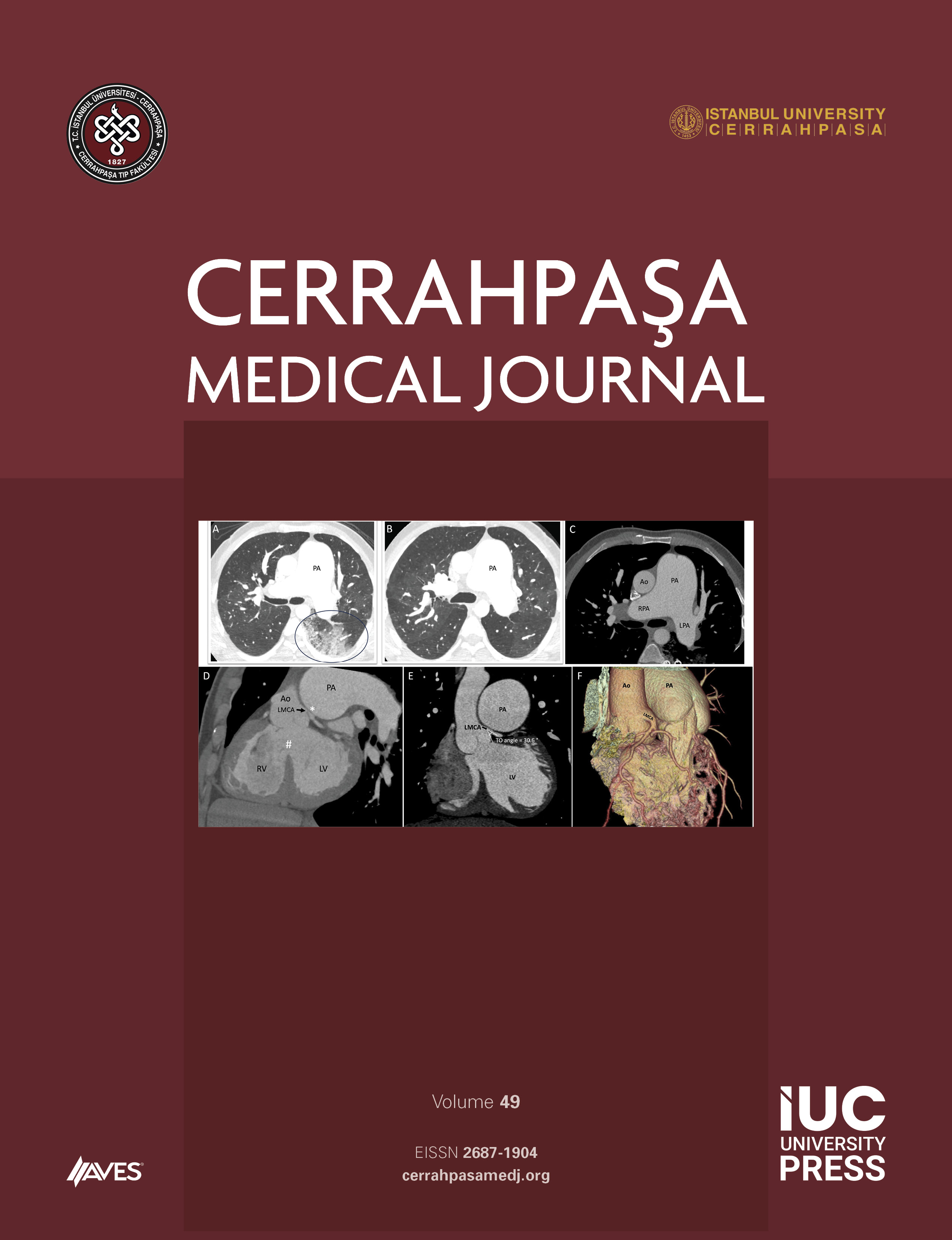Objective: To determine the possible extrapulmonary factors that can predict the need for intensive care support with initial computed tomography and predict mortality.
Methods: Computed tomography analysis was performed to determine the extrapulmonary findings, grouped under 4 categories: mediastinal, vascular, pleural, and intraabdominal. Pulmonary involvement of each lobe was scored between 0 and 5 points on computed tomography. In addition to ground-glass opacity, the computed tomography score increased by 1 point per lobe in the presence of a crazy-paving pattern and 2 points for consolidation.
Results: There was a significant difference in pulmonary parenchymal involvement between intensive care unit and in/outpatient groups (16 vs 8, P < .0001). Among the extrapulmonary computed tomography findings, the best predictor variable was lymphadenopathy, detected in 60 (25%) of the total cases and the majority (75%) of the intensive care unit patients (odds ratio 0.04, 95% CI = 0.02-0.08). Other parameters that predict the worse outcome were age (odds ratio 1.093, 95% CI = 1.057-1.136), presence of comorbidities (odds ratio 0.15, 95% CI = 0.08-0.28), and male gender (odds ratio 2.18, 95% CI = 1.17-4.1). Pericardial thickening was found to be higher in the intensive care unit group, while liver density was found to be lower. Pleural thickening was the most common pleural change with no morbidity or mortality prediction.
Conclusion: The most crucial extrapulmonary variable to predict intensive care unit admission is the presence of mediastinal lymphadenopathy in addition to pulmonary parenchymal involvement in a patient with COVID-19 pneumonia. This finding can guide the clinical management, can be easily detected with non-enhanced computed tomography, and can be obtained at the time of presentation of the patient.
Cite this article as: Aladağ Kurt S, Şirolu S, Dilken O, Börekçi Ş, Balkan İİ, Kuruğoğlu S. Extrapulmonary findings predicting intensive care support in coronavirus disease 2019 at initial computed tomography. Cerrahpaşa Med J. 2023;47(1):88-94.



